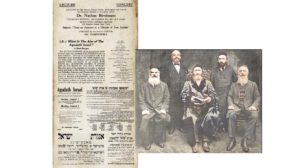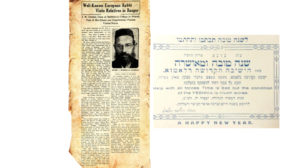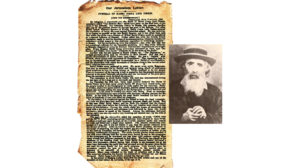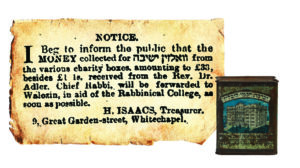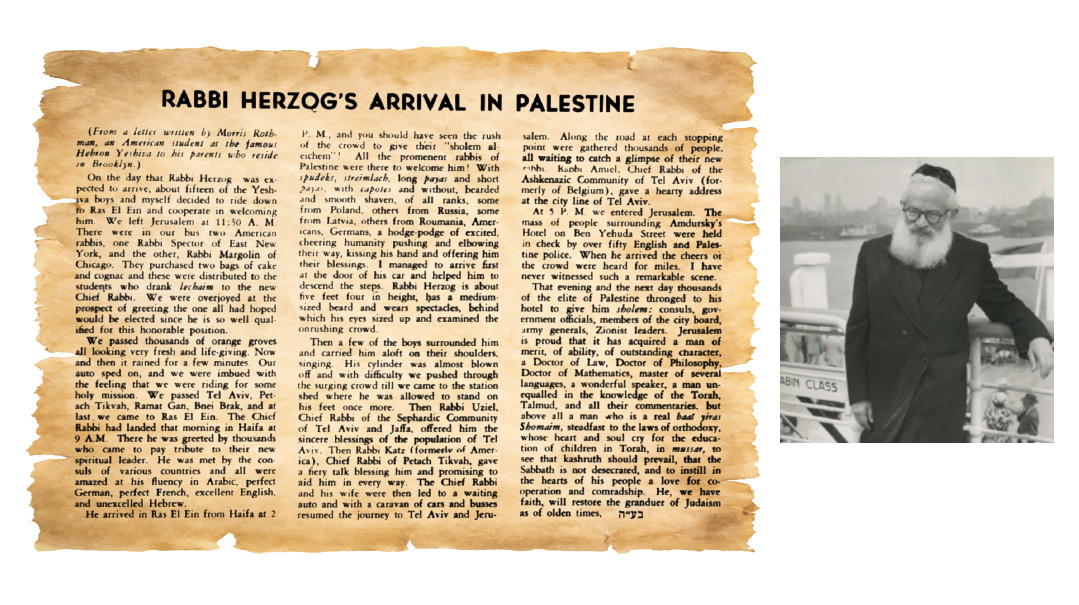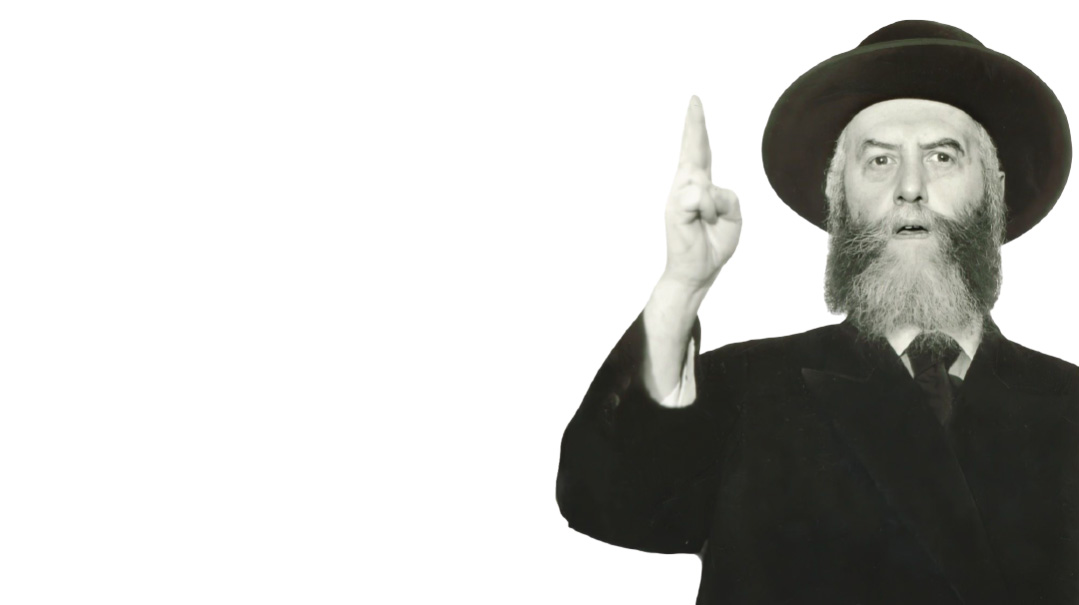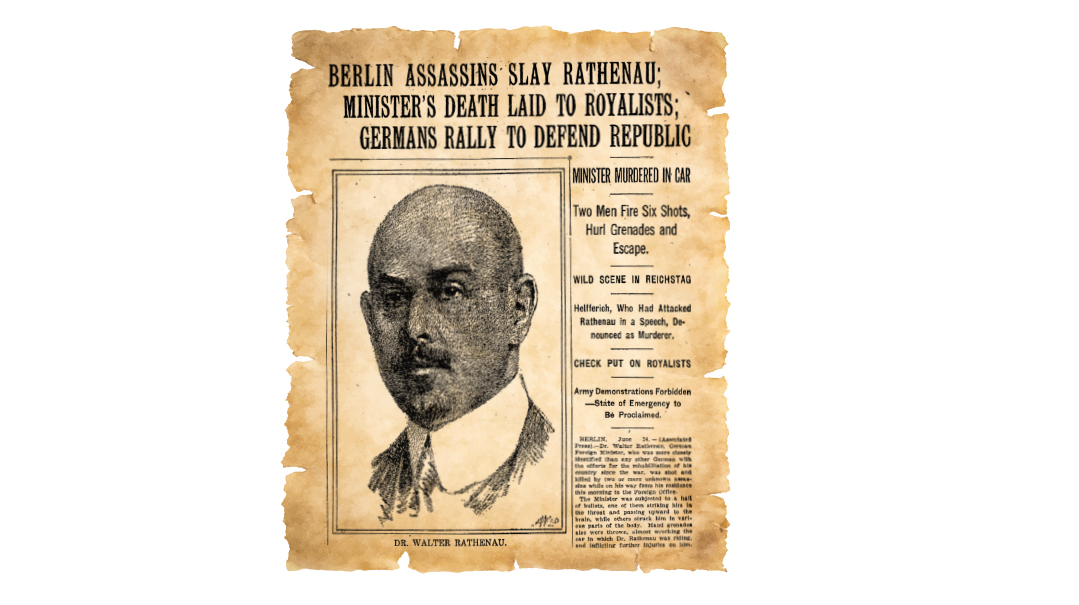Climbing Steps in Chevron
| July 20, 2021Restrictions didn’t stop Mendel (Abramovitch) Aviv, a new immigrant who bribed his way inside 95 years ago
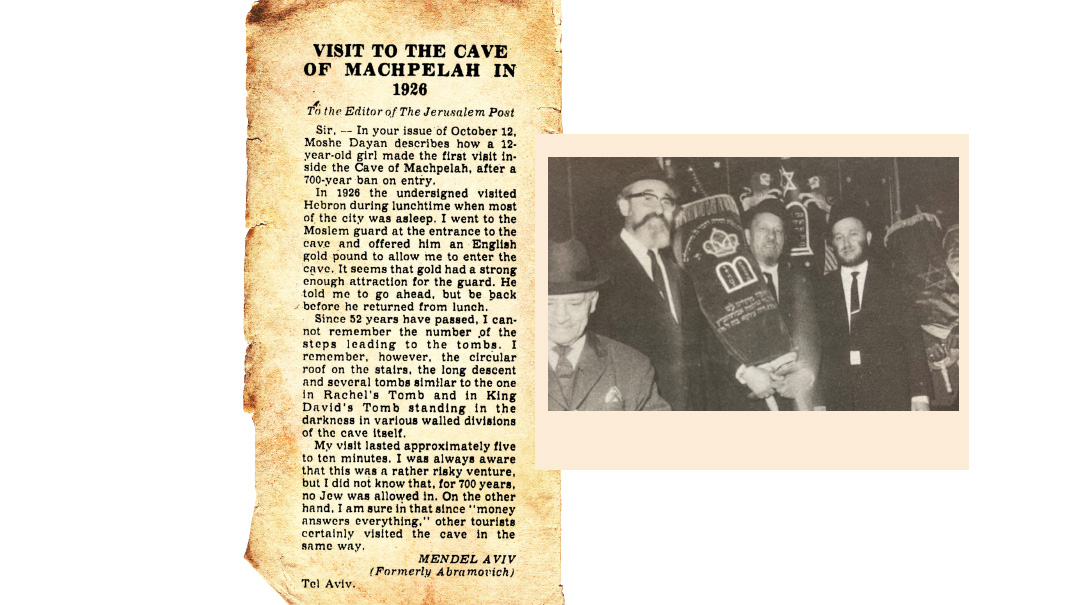
Beginning with the reign of the Mamluk sultan Baybars in the 13th century, Muslim authorities barred Jews from entering the Herodian structure above Mearas Hamachpeilah, permitting them to go only as far as the seventh step at the entrance. Those restrictions didn’t stop Mendel (Abramovitch) Aviv, a new immigrant who bribed his way inside 95 years ago.
Chevron was home to great rabbis and kabbalists, especially following the Spanish expulsion during the 16th century, which was something of a “golden age” of Jewish settlement in Eretz Yisrael. Illustrious Chevron residents included Rav Eliyahu de Vidas, author of Reishis Chochmah; Rav Shlomo Adani, author of Meleches Shlomo; and Rav Avraham Azulai, author of Chesed L’Avraham and ancestor of the Chida, who also resided in the city. The 19th century brought the likes of Rav Chaim Chizkiyahu Medini, author of Sdei Chemed, as well as growth of the local Chabad community. In 1924 the Slabodka Yeshivah arrived.
In his memoirs, an American Chevron-Slabodka talmid named Dov Cohen recounted the visits to Chevron by the Imrei Emes of Gur (1927) and the Rebbe Rayatz of Lubavitch (1929). While the Imrei Emes was granted the privilege of ascending to the 11th step at the entrance, the Rayatz was accorded unique treatment. Accompanied by his son-in-law Rav Shmaryahu Gurari and community leader Eliezer Dan Slonim (a descendant of the Baal HaTanya), the Rebbe was brought inside the building, in defiance of Grand Mufti Haj Amin al-Husseini, who had directed the keepers of the mosque to deny entry.
Ten days after the Rayatz’s storied visit, Chevron Arabs would massacre 67 Jews, bringing the centuries-long presence Jewish life in the City of the Avos to an end. It would resume following the Six Day War, when Rabbi Moshe Levinger led a group (posing as Swiss tourists) to spend Pesach in Chevron and later refused to leave, laying the foundations for what is now the Jewish community there.
A Shiur for The Ages
While the Imrei Emes did not have the Slabodka Yeshivah on his Chevron visit itinerary, the bochurim had other ideas. When his car passed the yeshivah, they surrounded it and asked the Rebbe to deliver a shiur. He asked what masechta they were studying; Sanhedrin, they replied. The Rebbe got out and ran into the building. He glanced into a Gemara Sanhedrin, then posed an incisive question, to which he delivered an insightful answer. Bidding farewell to Rav Chatzkel Sarna, he departed as quickly as he’d arrived.
More about Mendel
An ambitious, confident young man, Mendel Aviv arrived in the Holy Land in 1925 armed with a brachah from the Chofetz Chaim. He had an audience with the great sage while visiting his sister in Radin, where her husband Rav Nachman Kop was studying in the Chofetz Chaim’s elite Kollel Kodshim.
Upon arrival in Palestine, Mendel’s first endeavor was to use his amateur knowledge of long-range radios to connect Palestine with the outside world. This brought him into contact with the country’s economic elite, as well as an introduction to RCA chairman General David Sarnoff. Boldly referring to himself as “Israel’s Sarnoff,” Aviv urged the American executive to assist the embattled Yishuv, which was cut off from essential industry with the onset of World War II.
Mendel was a great supporter of the country’s burgeoning Torah institutions, developing a relationship with the Chazon Ish and his talmid Rav Chaim Yaakov Goldvicht. Aviv would later fund an expansion project for Rav Goldvicht’s Yeshivat Kerem B’Yavneh in the 1960s. He also worked with his nephew Zev Wolfson and MK Shlomo Lorincz to assist Chinuch Atzmai, using his clout with government officials to expand the school network.
To Rise Above: The Amazing Life of HaRav Dov Cohen zt”l: A Journey to Greatness Against All Odds (Feldheim)is a thrilling, highly recommended book about Dov Cohen’s journey from Seattle to Chevron.
(Originally featured in Mishpacha, Issue 870)
Oops! We could not locate your form.

